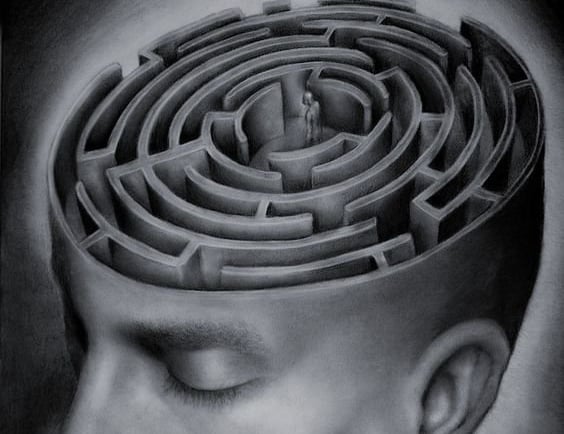The Gift at the Center: Navigating Adversity as Your Path to Purpose
David Miranda
2/9/20253 min read


Life has a way of testing us. It’s not the kind of test we can study for or prepare to conquer. It’s the kind that arrives unannounced, disguised as disruption—a loss, a diagnosis, or an unsettling doubt that whispers, Is this all there is?
In moments like these, we feel as though the ground beneath us is shifting. What once felt stable now feels uncertain, and our instinct is often to fight back. We grasp for control, searching for solutions, routines, or distractions to “fix” the discomfort.
But what if these challenges aren’t here to be fixed? What if they are here to be felt, understood, and embraced?
Seeing Difficulty as Dharma
The Tao Te Ching offers a perspective that is both simple and profound: “If you stay in the center and embrace death with your whole heart, you will endure forever.” It’s not about physical death, but the death of the stories we cling to—stories about who we are, how life should be, and what success looks like.
To stay in the center means to face life’s challenges fully, without resistance or denial. It’s a courageous act, requiring us to navigate life’s difficulties not as obstacles, but as part of the path itself.
This perspective invites us to see adversity as Dharma—the teachings we are meant to encounter, the exact experiences we need to grow and evolve. It is, as the Bhagavad Gita describes, a high-wire act of skillful and courageous living.
The Many Faces of Adversity
Adversity wears many faces. Sometimes, it’s as visible as illness—Alzheimer’s, Parkinson’s, or the slow wear of aging. Other times, it’s less tangible but just as real: a crumbling relationship, a sense of betrayal by the universe, or the ache of unmet expectations.
These struggles often unravel the stories we’ve built around ourselves. They expose vulnerabilities we’d rather keep hidden, leaving us susceptible to spirals of shame, guilt, or doubt. It can feel like being cast into an abyss of suffering.
And yet, even in the fog of despair, a faint light often persists—a beacon connected to faith, however fragile. This light reminds us that the challenge before us is not a mistake or a punishment. It’s an opportunity, a threshold we are meant to cross.
Adversity doesn’t block the path; it is the path.
The Dance of Aversion and Grasping
When difficulties arise, they stir powerful emotions: anger, resistance, denial, fear. These emotions can feel overwhelming, but they are also a gateway to transformation.
Aversion, in particular, has many names: hatred, judgment, disdain. At its core, it is the rejection of the present moment. It is the mind saying, I hate this. I want it to go away.
Grasping, on the other hand, is the longing for something different. It’s the belief that happiness lies somewhere else—just out of reach. Together, aversion and grasping keep us locked in a cycle of discontent, perpetually chasing or avoiding, never present.
This rejection of the moment creates what Buddhist teacher Chögyam Trungpa Rinpoche called the “pain of pain.” Pain itself is inevitable, but the suffering we create by resisting it is not.
Leaning Into Discomfort
What would happen if, instead of resisting, we leaned into the discomfort? Sylvia Boorstein, another Buddhist teacher, offers this guidance: “Go into it. Go into the anger, the fear, and feel it in the body. Get to know it. Feel the energy at its heart and find the secret gift at the center.”
This approach asks us to sit with our discomfort, to tolerate the sensations without acting or reacting. It’s not easy. The natural response to pain is to push it away, to avoid it, or to numb it. But when we allow ourselves to stay with the discomfort, we discover something surprising: it holds a gift.
At the heart of fear, anger, or doubt lies a hidden opportunity—a chance to transform, to grow, and to reconnect with our purpose.
The Gift of Transformation
Standing in the center of difficulty requires radical courage. It’s the willingness to confront the invisible, to sit with emotions that feel unbearable, and to trust that something greater is unfolding.
This act of surrender is not passive. It’s a choice to engage fully with the present moment, to listen to what it has to teach us, and to let it shape us in ways we can’t yet imagine.
When we embrace adversity as Dharma, we stop seeing it as something to be avoided and start seeing it as an essential part of our journey. The discomfort we feared becomes a doorway, leading us closer to our truest selves.
Finding the Center
Life’s challenges aren’t here to defeat us—they’re here to guide us. They strip away what is no longer needed, revealing what is real and enduring.
The next time you find yourself in the midst of difficulty, ask yourself: What is this moment teaching me? What lies at the heart of this discomfort?
Lean into the uncertainty. Step into the center. That’s where the gift of transformation waits—where your purpose begins to take shape.
Because sometimes, the path forward is not around the challenge, but straight through it.

